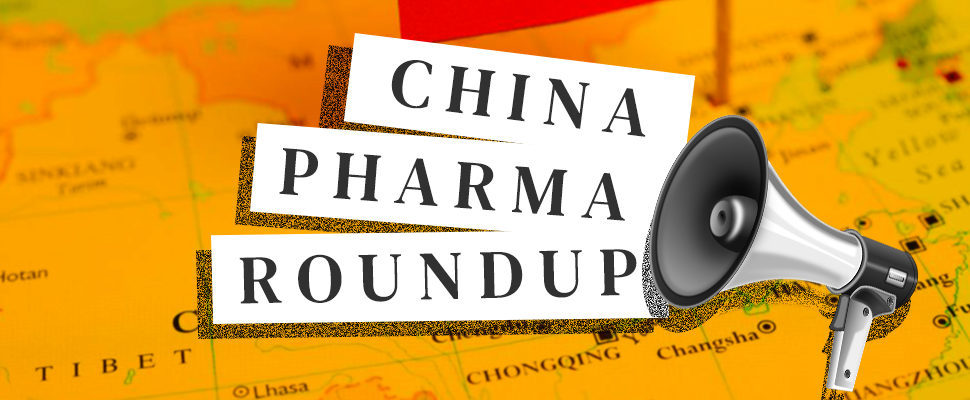The biggest pharma industry stories coming out of China, including the impact of the US Biosecure act on Chinese giants WuXi AppTec and WuXi Bio; Novartis’ acquisition of SanReno Therapeutics; the first orphan drug designation for a Chinese herbal medicine-based therapy, and AstraZeneca’s new production line in Taizhou.
Eisai expects 1,500 Alzheimer’s patients in China launch, sees ‘huge’ growth (Reuters)
Chinese medical device firm Mindray plans $927 mln deal to control APT Medical (Reuters)
WuXi Biologics plays defense after US bill brands certain Chinese biopharmas as security threats (Fierce Pharma)
New legislation aimed at blocking a group of Chinese biopharma firms from tapping into U.S. federal funding has sent shares tumbling in recent days.
Thursday, the House Select Committee on the Strategic Competition between the United States and the Chinese Communist Party unveiled the BIOSECURE act—a bill aimed at keeping taxpayer dollars out of the hands of so-called “foreign adversary biotech companies of U.S. national security concern.”
The bill specifically targets CDMO giants WuXi AppTec and WuXi Bio plus Chinese genomics companies BGI Group, MGI and Complete Genomics.
China Biotech Stocks Lag Benchmark Most in Four Years on US Bill (Bloomberg)
China’s biotech stocks faced renewed selling pressure as geopolitical concerns add to a list of headwinds weighing on the sector.
A gauge of Chinese biotech firms has underperformed the MSCI China Index by the most since early 2020 amid a recently proposed US legislation to ban some Chinese firms from government contracts. This comes after China’s health-care sector was beaten down over the past two years by factors such as the inclusion of some companies in US’ unverified list and a government crackdown on corruption.
Novartis Acquires Chinese Biotech SanReno Therapeutics (Contract Pharma)
SanReno Therapeutics, a clinical-stage company specializing in the discovery, development, and commercialization of therapies for kidney diseases, has been acquired by Novartis. SanReno will become an indirect, wholly owned subsidiary of Novartis.
SanReno holds exclusive rights in greater China and Singapore for two late-stage assets targeting Immunoglobulin A Nephropathy (IgAN): atrasentan and zigakibart. Atrasentan, an oral endothelin A receptor antagonist (ERA), is in Phase 3 development for IgAN. It demonstrated clinically meaningful and highly statistically significant proteinuria reduction at interim analysis, meeting the primary endpoint of its Phase 3 study. Zigakibart (BION-1301), a subcutaneously administered monoclonal antibody targeting APRIL (A Proliferation Inducing Ligand), obtained approval from China CDE for entry into the Phase 3 study in October 2023.
China’s WuXi Biologics announces research service agreement worth $20 M with BioNTech (BioSpectrum Asia)
China’s WuXi Biologics has signed a research service agreement with Germany-based BioNTech SE, a next generation immunotherapy company pioneering novel therapies for cancer and other serious diseases.
Under the terms of the agreement, WuXi Biologics leverages its proprietary antibody discovery technology platforms to discover two undisclosed targets of preclinical investigational monoclonal antibodies for BioNTech to develop next-generation therapeutic product candidates.
Chinese medicine drug for myofibrillar myopathy receives orphan drug designation by US FDA (BioSpectrum Asia)
The Centre for Chinese Herbal Medicine Drug Development of Hong Kong Baptist University (HKBU) has developed a new drug using effective components of a Chinese herbal medicine, Chaenomelis Fructus, for the treatment of the rare disease, myofibrillar myopathy. The drug has obtained the orphan drug designation from the US Food and Drug Administration (FDA), and is the first botanical drug in Hong Kong to receive this qualification.
Success in obtaining orphan drug (a drug used for treating rare disease) designation will accelerate the approval process of the new drug, including speeding up of the review process, waiver of the marketing authorisation fee, and seven years of market exclusivity for the approved product. The research team plans to submit an Investigational New Drug application to FDA in two years to conduct clinical trials.
AstraZeneca to build new production line in Taizhou (China Daily)
Pharmaceutical company AstraZeneca and the Taizhou National Medical High-tech Development Zone in Jiangsu province inked an investment cooperation agreement to build a new production line on Jan 13.
According to the agreement, the company will spend 190 million yuan ($26.5 million) to build a new production line for Dapagliflozin and Metformin Hydrochloride, a diabetes therapy that was marketed in China last November.
Shanghai startup’s gene therapy restores hearing in five deaf children, running ahead of Lilly and Regeneron trials (Endpoints)
Five of six children who had been deaf since or soon after birth can now hear after receiving a gene therapy developed by Shanghai Refreshgene Therapeutics, according to a new study published in the Lancet Wednesday.
The children in the trial had a mutated version of a gene that encodes otoferlin, disrupting signaling to the brain from the ear’s sound-sensing hair cells. The therapy, which is injected into the inner ear, uses a viral vector known as an AAV to deliver a functional copy of the gene.



